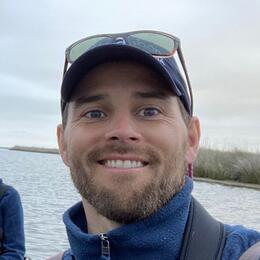A rare seabird that depends on North Carolina’s offshore waters has officially been classified as an endangered species. The U.S. Fish and Wildlife Service finalized the listing of the Black-capped Petrel last month.
The sturdy, long-traveling seabird spends most of its life on the open ocean and returns to land to nest in cliff faces on the island of Hispaniola in the Caribbean. During its time at sea, the Gulf Stream off the Southeast coast provides vital foraging habitat for the species.
Black-capped Petrels are graceful, black and white birds with a small and declining population. For years, they were thought to be extinct, before they were rediscovered in 1963.
Today, the species faces a variety of threats on its nesting grounds, from deforestation and invasive mammals to climate-fueled storms that flood nesting burrows and erode habitat. At sea, future energy development could pose a threat.
That’s one of the many reasons Audubon and our partners have been speaking up to ensure offshore wind energy develops responsibly on the Atlantic seaboard, outside of the most important places for birds. Thus far, proposed lease areas have avoided habitat for Black-capped Petrels and other critically endangered seabirds like the closely related Bermuda Petrel, or Cahow. Federal protections should help ensure that remains the case.
“Black-capped Petrels are inspiring and mysterious birds, living most of their life on the wing,” Audubon North Carolina Interim Executive Director Curtis Smalling said. “They also have a special connection to North Carolina’s offshore waters. Just 1,000 breeding pairs remain, yet they can regularly be seen foraging for fish and squid off our coast. These federal protections are absolutely vital to protect this special bird going forward.”
The Black-capped Petrel was once widespread in the Caribbean, breeding on at least six islands. It’s known locally as Diablotin, or “little devil,” for the haunting call it makes on its breeding grounds.
At sea, the petrels are strong flyers, slicing just above the water to pluck food from the surface. New research has shown they can travel up to 420 miles in a day in search of food.
The first active Black-capped Petrel nest wasn’t observed by scientists until 2002, and the first nest with a chick until 2011. Researchers believe the birds may also be nesting on Dominica and Cuba.




